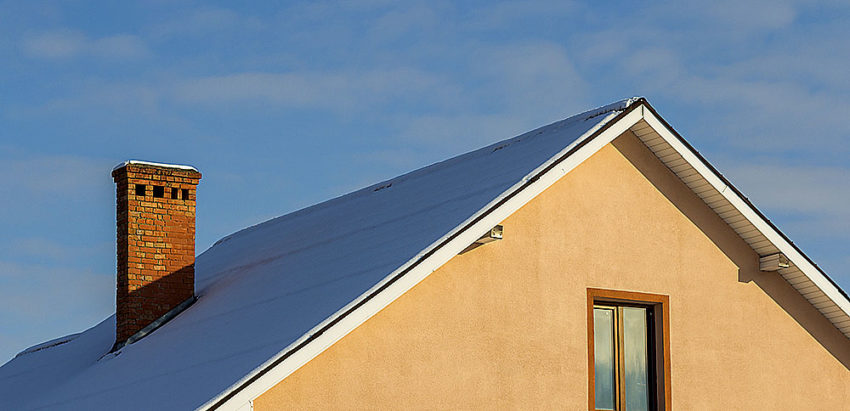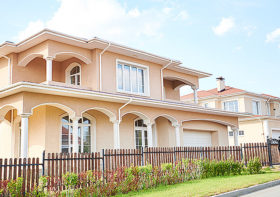Taking care of your chimneys

Every household with a chimney understands the comfort it brings during cold seasons. However, without proper maintenance, chimneys can become hazardous. This is the main reason why calling chimney cleaning services at the right time is so important.
Understanding Chimney Maintenance
Recognizing signs of chimney damage and seeking timely repairs are vital steps in ensuring the safety and functionality of your chimney.
Identifying Signs of Damage
Vigilance is crucial in spotting signs of chimney damage early on. Cracked mortar, white staining, rust formation, and wallpaper damage are indicators that should not be overlooked. Detecting these issues promptly can prevent costly repairs and safeguard your home from potential hazards.
Consequences of Neglect
Neglecting chimney repairs can have dire consequences, including structural damage and safety risks. Fire hazards and carbon monoxide exposure are significant dangers associated with damaged chimneys. Prompt attention to identified issues is essential to mitigate these risks.
Seeking Professional Assistance
Chimney repair is a specialized task that requires professional expertise. Engaging chimney repair services ensures comprehensive maintenance, from accurate damage assessment to proficient repairs. Their knowledge and tools enable them to address various chimney issues effectively, promoting longevity and safety.
Fire Safety Measures
Damaged chimneys pose significant fire hazards. Cracks and blockages can lead to chimney fires, endangering occupants and property. Additionally, carbon monoxide exposure from faulty chimneys can be fatal. Regular inspections and repairs are crucial in preventing these risks and ensuring a safe living environment.
Importance of Regular Inspection
Routine inspections by professionals help preempt potential chimney issues. These checks uncover minor defects before they escalate, saving homeowners from costly repairs and safety hazards. Adherence to safety standards guarantees efficient chimney function and compliance with regulations.
Commitment to Regular Maintenance
Proactive chimney maintenance is essential for year-round efficiency and safety. Annual cleaning reduces the risk of chimney fires by eliminating soot and creosote buildup. Getting help from chimney sweep services Bowie early saves money by addressing issues promptly and preventing costly repairs in the future.
Choosing the Right Service
Selecting the right chimney service is vital for quality maintenance. Look for experienced professionals with necessary certifications and insurance. Positive reviews and effective communication are indicators of reliable service providers. Prioritize quality and safety over low costs when choosing chimney services.
Preventive Measures for Chimney Maintenance
In addition to recognizing signs of damage and seeking professional assistance, implementing preventive measures can further enhance chimney maintenance. Simple steps can be taken to minimize the risk of chimney issues and ensure its longevity.
- Regular Cleaning and Inspection: Schedule regular chimney cleaning and inspection by professionals to remove creosote buildup, debris, and detect any emerging issues before they escalate. This proactive approach can prevent costly repairs and ensure optimal chimney performance.
- Installation of Chimney Caps: Installing chimney caps can prevent debris, animals, and water from entering the chimney flue. These caps act as barriers, reducing the risk of blockages, moisture damage, and nesting animals, thus prolonging the chimney’s lifespan.
- Use of Seasoned Firewood: Burning seasoned firewood reduces the buildup of creosote, a flammable substance that can lead to chimney fires. Seasoned firewood has lower moisture content, producing cleaner and safer combustion, thereby minimizing chimney maintenance requirements.
- Proper Use of Fireplace: Educate household members on the correct use of the fireplace to minimize wear and tear on the chimney. Avoid overloading the fireplace with excessive wood, as this can lead to overheating and structural damage. Additionally, use a fireplace screen to prevent sparks from escaping and causing chimney fires.
Emergency Preparedness and Response
Despite preventive measures, emergencies can still occur. Therefore, it’s essential to have an emergency plan in place and know how to respond effectively to chimney-related incidents.
- Fire Safety Protocol: Develop a fire safety protocol that includes procedures for extinguishing chimney fires. Instruct household members on how to safely evacuate the premises in case of a chimney fire and when to contact emergency services.
- Carbon Monoxide Detectors: Install carbon monoxide detectors near the fireplace and in sleeping areas to alert occupants to the presence of carbon monoxide. Regularly test and maintain these detectors to ensure their functionality and reliability.
- Emergency Contact Information: Keep a list of emergency contact information, including chimney repair services and fire departments, readily accessible. In the event of a chimney-related emergency, having this information readily available can expedite response and minimize damage.
- Evacuation Plan: Develop and practice an evacuation plan with household members to ensure everyone knows how to exit the home safely in the event of a chimney fire or other emergency. Designate a meeting point outside the home where everyone can gather after evacuating.
Chimney Weatherproofing Techniques
Weatherproofing your chimney is essential to protect it from the elements and prolong its lifespan. Incorporating weatherproofing techniques can prevent moisture intrusion, structural deterioration, and damage caused by extreme weather conditions.
- Chimney Crown Repair: The chimney crown, located at the top of the chimney stack, serves as a barrier against water penetration. Over time, chimney crowns may develop cracks or deteriorate due to exposure to weather elements. Repairing or replacing damaged chimney crowns can prevent water from seeping into the chimney structure and causing damage.
- Waterproofing Sealants: Applying waterproofing sealants to the exterior masonry of the chimney can provide an additional layer of protection against moisture intrusion. These sealants create a barrier that repels water while allowing the chimney to breathe, preventing damage caused by freeze-thaw cycles and moisture absorption.
- Flashing Maintenance: Flashing, which seals the junction between the chimney and the roof, can deteriorate over time, leading to water leaks. Regular inspection and maintenance of flashing ensure its integrity and effectiveness in preventing water intrusion. Repairing or replacing damaged flashing can prevent costly water damage to the chimney and surrounding roof structure.
- Chimney Cap Installation: Installing a chimney cap is an effective way to prevent water, debris, and animals from entering the chimney flue. Chimney caps also help prevent downdrafts and improve chimney draft efficiency. Choose a chimney cap with a mesh screen to prevent animals from nesting while allowing smoke to escape.
Conclusion
Maintaining your chimney is crucial for the safety and functionality of your home. Prompt action upon detecting signs of damage and regular chimney repair Columbia are essential practices. Engage professional chimney services for comprehensive care and ensure your chimney remains a safe and efficient component of your household.



Leave a Reply